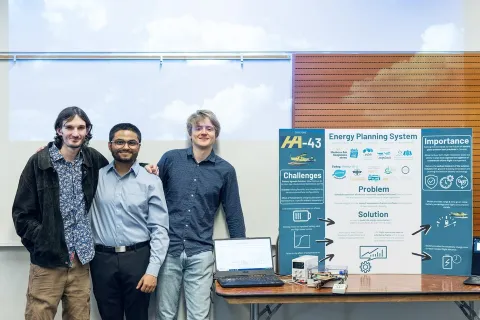
Oakley Bach-Raabe, Somith Das, Jayden Sahl, Scott Switzer, Michael Worobetz
- Community Partner: Harbour Air
- Degree:
- Bachelor of Applied Science
- Program:
- Campus: Vancouver
Our design process and challenges
Harbour Air wanted a way to schedule the operation of their electric planes to account for the logistics of charge times and range capabilities, and that took into account the impact of temperature on battery use and charging time. We began by developing a hardware testing system to characterize how batteries operate at different temperatures, charge rates and loads. Predicting state of charge is a new area of research with many different methodologies being used. We needed to do a fair bit of research to identify which would work best for our specific application.This significant endeavour gave us data to build a model to represent battery pack and flight power curves. We tested our model on a variety of battery cells and from there were able to scale our model up from one battery cell to the full battery system in use on a plane. The third stage of our project was creating a flight planning tool. Flight operators can enter certain inputs to find out required charging times for the next scheduled flight or the predicted final state of charge after a flight. We’ve designed a user-friendly interface to make it easy for the operations crew to plan and organize flights based on energy requirements.
What we learned
"Capstone projects are a very rewarding process as they enable you to apply the theoretical knowledge and practical skills you’ve learned in your second and third year courses and bring it all together on an ambitious project."
The project may have seemed daunting at the start, but like any big project, if you break it into small manageable chunks, it is more than achievable.




